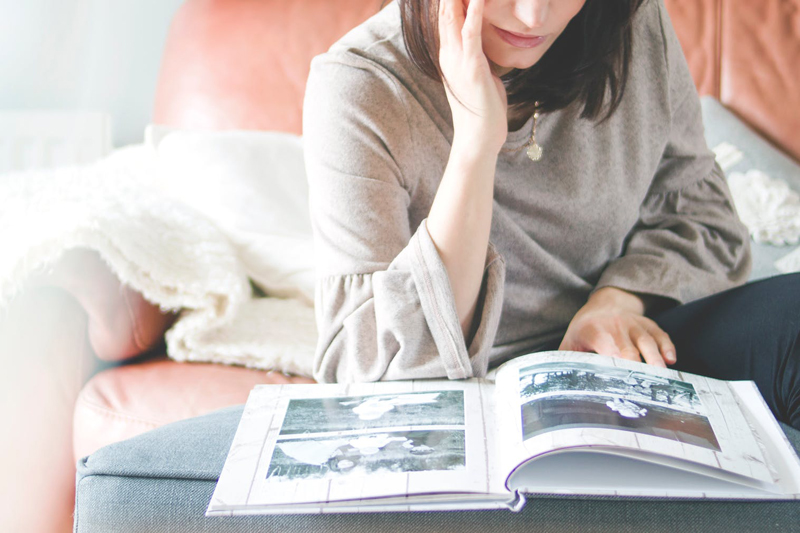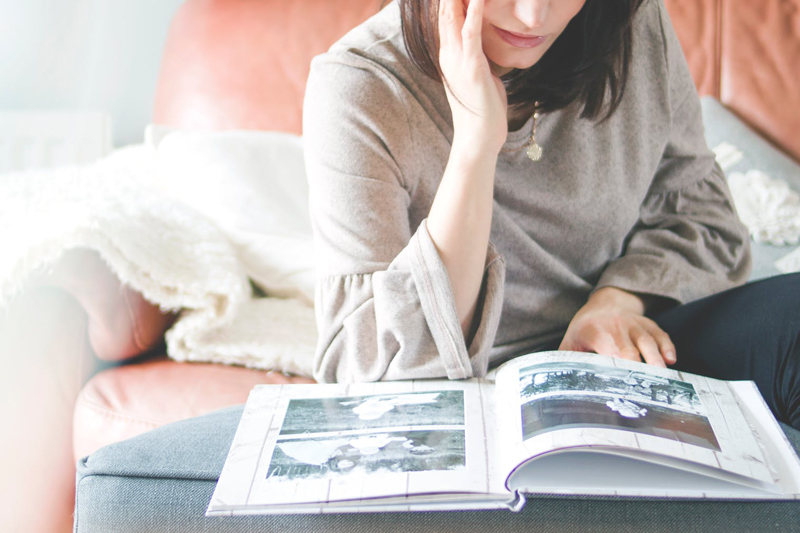Creating Digi Papers in Photoshop

Creating digital paper can be exciting and liberating. The possibilities are only limited the imagination and Photoshop skill set. After reading this article, you will be on your way to making basic digital papers that can be customized to make gorgeous original creations for use in digital scrapbooks over and over.
Scrapbooking paper is expensive and consumable. Digital paper can be used again and again. Create a group of 8 to 10 papers and repeat them throughout a digital scrapbook creating a work of customized harmonious cohesion.
I use Adobe Photoshop CS5.1. The functions in this program are extremely similar to Adobe Photoshop Elements as well as older versions of Photoshop CS.
Follow these step by step instructions to create a basic digital paper:
1. Create a blank file. Within Photoshop, click file > new. A dialog box will open. These settings are important to achieving desired, professional results. Make sure the “width and height” are set to inches. Set them to 12 inches by 12 inches. This is the standard size scrapbook. If you desire to make an 8 by 8 scrapbook that can be printed on photo paper at home choose 8 inches by 8 inches. Next, be sure to set the resolution to 300 pixels/inch. This is print quality.
2. Now, get creative. Start with a base color for the paper. Think about the purpose of the digital paper. For example, if you are making a digital scrapbook about a baby girl, you probably want to choose soft pinks or purples. Click on the little bucket icon on the left hand side in the tool bar. Next, select the background color by clicking on the white box at the bottom of the tool bar. This will pull up the pallet. Slide the spectrum bar up and down until the desirable hue is selected, and then choose the shade by clicking within the large square. Once satisfied, select the paint bucket and click anywhere on the 12 by 12 page. This will fill the background with color. Repeat the process and change the background color until satisfied.
3. Stop and make a new layer. This is very important. Each element that should be its own layer in case the intensity of the element needs adjusted later. To make a layer, in the box on the right underneath the layer pane there is a little icon that looks like a mini square inside another square. Click on this box and a new layer will be created. An upcoming article will be written including more information about using layers.
4. Adobe Photoshop comes with a limited selection of brush shapes. Brusheezy.com has an infinite amount of brush shapes including grunge brushes, patterns, and images can be downloaded and added to the stock program. Upcoming articles will offer more information about Photoshop brushes. Using the basic brushes, add a stripe, border or a similar detail to the page. Choose a color that is complimentary or that matches the background closely by using the same methods as mentioned in step two to change colors.
5. Once a new layer is created and the color desired is selected, click on the brush icon. Select a brush by clicking on the drop box located directly to the left of the brush icon below the “file, edit, etc.” tool bar. This is the basic brush set. Upload a different set of stock brushes by clicking the little round arrow icon inside the brush selection pane. I recommend clicking a brush set such as “Special Effects Brushes” and hitting “append.” This will keep the default brushes accessible. After selecting a brush shape, change the size by using the two bracket keys [ ] located to the right of the letter “p” on the keyboard. Next, make a brush stroke on the paper. Make a border or paint a section of the paper. Do not be afraid to experiment. Undo the work by either clicking edit > step backward or hitting “Ctrl + Alt + Z” on the keyboard. This works like the undo function on other programs.
6. Change the intensity of each layer by adjusting the opacity. Select a layer to tone down. Click on the down arrow next to “opacity” at the top of the layer pallet. Move the slider until the layer is more fitting to the design. Click the layer again. Changing the opacity makes all the difference in designing papers. It can also give the paper an “inked” or “chalked” appearance when brush strokes are applied to the edges and made less opaque.
7. Save the paper two ways when complete. Create a file folder called digital paper or something similar. Save the paper as a Photoshop file first using a short yet descriptive title. This will prevent a lot of headache later. Next save it as a .jpg by clicking Save As and selecting .jpg from the drop down menu next to the word “Format.” Keep the file size as large as possible so that quality will be maintained throughout the scrapbook.
I recommend looking at real Scrapbook paper that’s on hand to get an idea of what kind of designs to create. While these steps may seem complicated, it is actually pretty simple once you give it a try. Don’t be afraid to break out and create something as unique as you are. No one else will have this digital paper and it will be yours to use repeatedly for a lifetime.
Scrapbooking paper is expensive and consumable. Digital paper can be used again and again. Create a group of 8 to 10 papers and repeat them throughout a digital scrapbook creating a work of customized harmonious cohesion.
I use Adobe Photoshop CS5.1. The functions in this program are extremely similar to Adobe Photoshop Elements as well as older versions of Photoshop CS.
Follow these step by step instructions to create a basic digital paper:
1. Create a blank file. Within Photoshop, click file > new. A dialog box will open. These settings are important to achieving desired, professional results. Make sure the “width and height” are set to inches. Set them to 12 inches by 12 inches. This is the standard size scrapbook. If you desire to make an 8 by 8 scrapbook that can be printed on photo paper at home choose 8 inches by 8 inches. Next, be sure to set the resolution to 300 pixels/inch. This is print quality.
2. Now, get creative. Start with a base color for the paper. Think about the purpose of the digital paper. For example, if you are making a digital scrapbook about a baby girl, you probably want to choose soft pinks or purples. Click on the little bucket icon on the left hand side in the tool bar. Next, select the background color by clicking on the white box at the bottom of the tool bar. This will pull up the pallet. Slide the spectrum bar up and down until the desirable hue is selected, and then choose the shade by clicking within the large square. Once satisfied, select the paint bucket and click anywhere on the 12 by 12 page. This will fill the background with color. Repeat the process and change the background color until satisfied.
3. Stop and make a new layer. This is very important. Each element that should be its own layer in case the intensity of the element needs adjusted later. To make a layer, in the box on the right underneath the layer pane there is a little icon that looks like a mini square inside another square. Click on this box and a new layer will be created. An upcoming article will be written including more information about using layers.
4. Adobe Photoshop comes with a limited selection of brush shapes. Brusheezy.com has an infinite amount of brush shapes including grunge brushes, patterns, and images can be downloaded and added to the stock program. Upcoming articles will offer more information about Photoshop brushes. Using the basic brushes, add a stripe, border or a similar detail to the page. Choose a color that is complimentary or that matches the background closely by using the same methods as mentioned in step two to change colors.
5. Once a new layer is created and the color desired is selected, click on the brush icon. Select a brush by clicking on the drop box located directly to the left of the brush icon below the “file, edit, etc.” tool bar. This is the basic brush set. Upload a different set of stock brushes by clicking the little round arrow icon inside the brush selection pane. I recommend clicking a brush set such as “Special Effects Brushes” and hitting “append.” This will keep the default brushes accessible. After selecting a brush shape, change the size by using the two bracket keys [ ] located to the right of the letter “p” on the keyboard. Next, make a brush stroke on the paper. Make a border or paint a section of the paper. Do not be afraid to experiment. Undo the work by either clicking edit > step backward or hitting “Ctrl + Alt + Z” on the keyboard. This works like the undo function on other programs.
6. Change the intensity of each layer by adjusting the opacity. Select a layer to tone down. Click on the down arrow next to “opacity” at the top of the layer pallet. Move the slider until the layer is more fitting to the design. Click the layer again. Changing the opacity makes all the difference in designing papers. It can also give the paper an “inked” or “chalked” appearance when brush strokes are applied to the edges and made less opaque.
7. Save the paper two ways when complete. Create a file folder called digital paper or something similar. Save the paper as a Photoshop file first using a short yet descriptive title. This will prevent a lot of headache later. Next save it as a .jpg by clicking Save As and selecting .jpg from the drop down menu next to the word “Format.” Keep the file size as large as possible so that quality will be maintained throughout the scrapbook.
I recommend looking at real Scrapbook paper that’s on hand to get an idea of what kind of designs to create. While these steps may seem complicated, it is actually pretty simple once you give it a try. Don’t be afraid to break out and create something as unique as you are. No one else will have this digital paper and it will be yours to use repeatedly for a lifetime.

Related Articles
Editor's Picks Articles
Top Ten Articles
Previous Features
Site Map
Content copyright © 2023 by Amber Stull. All rights reserved.
This content was written by Amber Stull. If you wish to use this content in any manner, you need written permission. Contact Michelle McVaney for details.



